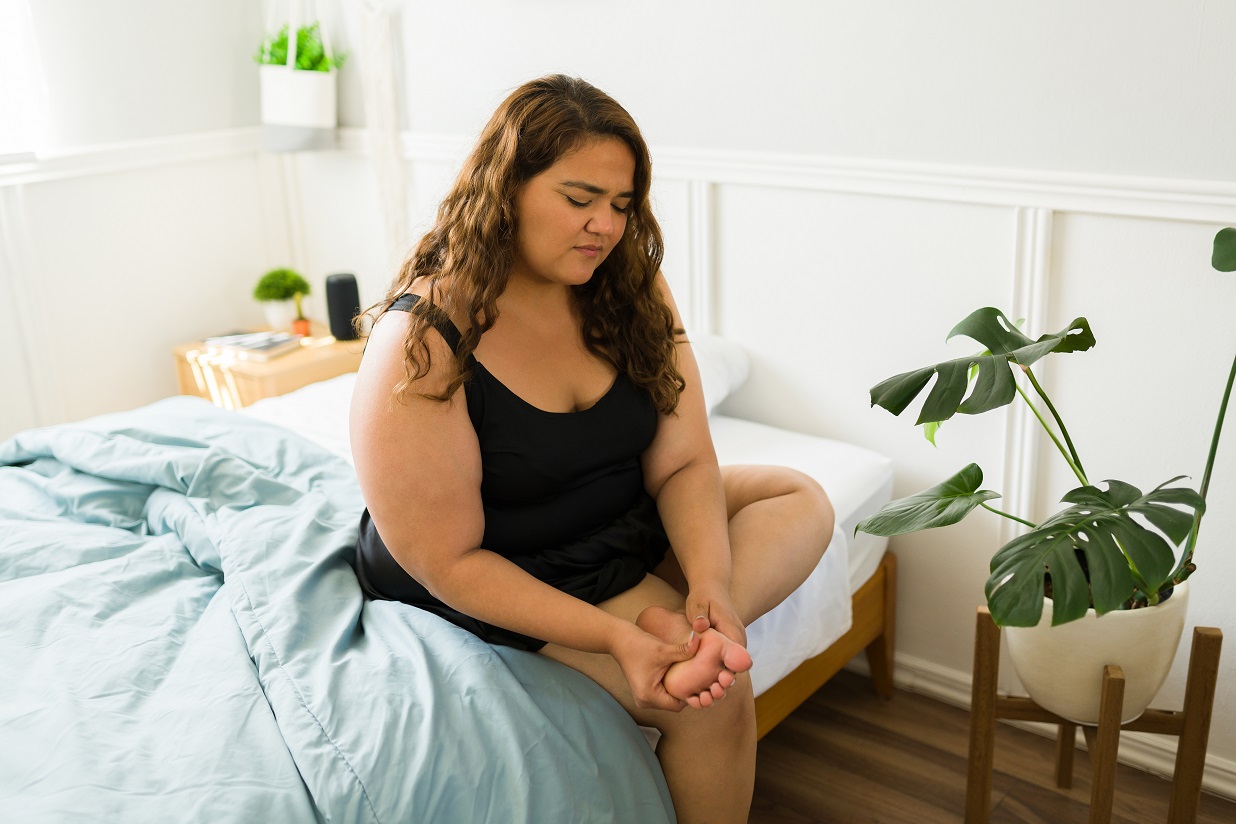Phone: +44 (0)20 8492 1600
Need help or have a question?
Contact us at: [email protected]
Key Takeaways Impact on Foot and Ankle Obesity significantly increases the risk of foot and ankle problems due to the added weight and pressure on the lower extremities. Biomechanical Changes Flat feet and pronated foot function are common biomechanical alterations in individuals with obesity, often leading to foot pain and discomfort. Management Strategies Addressing obesity through weight management and employing foot care strategies can alleviate foot problems and improve mobility.
Obesity is a growing concern globally, with numerous health implications ranging from cardiovascular diseases to musculoskeletal disorders. One of the often overlooked aspects of obesity is its impact on foot health. Carrying extra weight can cause a lot of issues for your feet, affecting how they look and work.
Here are some ways obesity can affect your feet:
Foot pain is a common complaint among individuals with obesity. The biomechanical alterations associated with excess weight often contribute to this discomfort. For instance, the flattening of the arch can change the alignment of the foot, which in turn, affects the way weight is distributed across the foot and can lead to foot pain.
Some of the biomechanical changes observed in individuals with obesity include:

Obesity can lead to or exacerbate various foot conditions. Below are some common foot problems associated with obesity:
Plantar fasciitis is a painful condition caused by inflammation of the plantar fascia, the thick band of tissue running across the bottom of the foot. Excess weight can aggravate plantar fasciitis by increasing the pressure on this tissue.
The extra weight from obesity can accelerate the wear and tear on the joints in the feet, leading to osteoarthritis. This condition causes pain, stiffness, and sometimes swelling in the affected joints.
Obesity is a risk factor for gout, a type of arthritis caused by excess uric acid in the bloodstream. The additional weight can make gout attacks more frequent and severe.
For a more comprehensive list of foot problems and their descriptions, you may visit our Common Foot Problems page.
Losing weight can significantly alleviate the pressure on your feet, thereby reducing the risk of foot problems. Weight loss can be particularly beneficial in managing conditions such as plantar fasciitis and osteoarthritis, where reducing the load on your feet and joints can provide relief from pain and discomfort.
Here are some benefits of weight loss for foot health:
Benefits of Weight Loss for Foot Health Reduced Pressure on Feet Alleviates conditions like plantar fasciitis Improved Arch Structure Helps in restoring the natural arch of the foot, improving foot function Lessened Joint Pain Eases strain on the joints in feet and ankles
It’s a common query whether losing weight can result in smaller feet. The truth is, weight loss can also lead to a decrease in shoe size. As you shed pounds, the fat pads on the bottoms of your feet may thin out, and the width and length of your feet can decrease slightly. Moreover, weight loss can help in restoring the natural arch of the foot, which might also affect your shoe size.
Note: It’s essential to get your feet measured regularly, especially after significant weight loss, to ensure you are wearing the correct shoe size which provides adequate support and comfort.
In the short term, there are several strategies individuals with obesity can employ to help their feet. These include:
These strategies can give you quick relief and help improve your foot health. They are especially helpful while you’re also working on long-term weight management goals.

Adopting a comprehensive foot care regiment can significantly improve foot health, especially for individuals with obesity. Here are some components of an effective foot care regimen:
Components of Foot Care Regimen Routine Foot Examinations Early identification and management of foot problems Physical Therapy Alleviates foot pain and improves foot function Weight Management Provides long-term relief from obesity-related foot problems
If foot problems persist or worsen despite self-care measures, it’s crucial to seek professional help. Podiatrists and other foot care specialists can provide personalised treatment plans to address obesity-related foot issues and improve your quality of life.
Obesity significantly impacts foot health, but with the right strategies, individuals can manage foot problems effectively. From understanding the biomechanical changes associated with obesity to adopting a comprehensive foot care regiment. Individuals have several avenues to improve their foot health and overall well-being. Encouraging weight loss and promoting proper foot care are effective strategies in alleviating the challenges faced by individuals with obesity.
By exploring the Common Foot Problems and our Foot Care Tips page, you can gain a deeper understanding of foot health and find solutions to common foot issues.
This article was written by Dr. James Philip MBChB who graduated from the University of Manchester in 2015 and went on to train in hospitals across the North West of England. He has experience working in both hospital medicine, and the community, and played his part as a front line worker on the COVID-19 wards. He now works as a freelance medical writer and medical education entrepreneur.